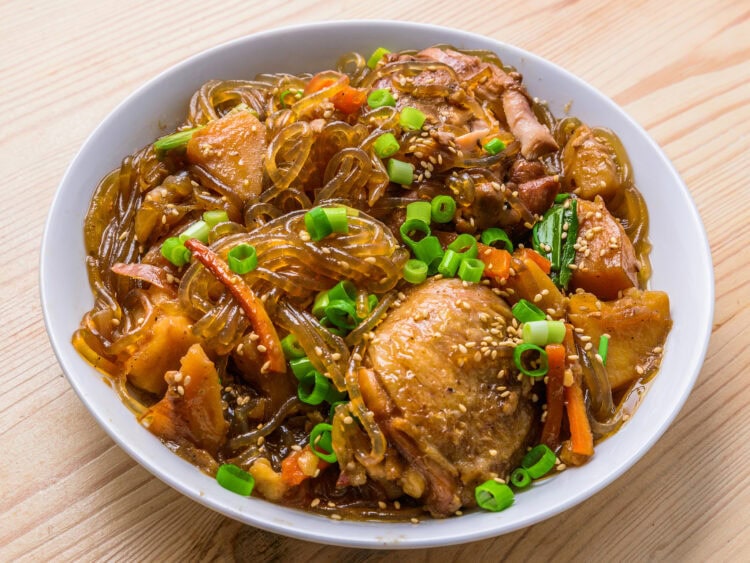The server places a dish as wide as a wok on the table, from which a fragrant, warm aroma of soy sauce and ginger escapes. Pieces of chicken glisten under a mahogany-colored glaze; translucent noodles curl like glass ribbons around fist-sized potatoes, and long green peppers float on the surface, their reddish seeds glistening through the steam.

Even before the first bite, the aroma alone – sweet, salty, slightly peppery – is enough to explain why this once-modest market dish has become the country’s favorite comfort food on rainy days. But how did an inexpensive braise, born in a provincial alley, acquire cult status from Seoul to New York? The answer lies in the late 1980s, in the bustling market of Andong.
From Market Improvisation to National Icon Status
In the late 1980s, the old shopping arcade in downtown Andong, nicknamed “Chicken Alley”, was facing trouble. Western-style fried chicken shops were siphoning off customers, and local vendors needed a heartier, cheaper, and easily shareable dish.
Their solution: merge the familiar technique of dakjjim, “slow-cooking a whole chicken, bones and all, with the sweet-salty accents of the galbi marinade already revered in Korea. Into the pot, they threw a generous amount of vegetables and a handful of glass noodles to stretch the protein portion, while keeping it affordable enough for a group of” students.
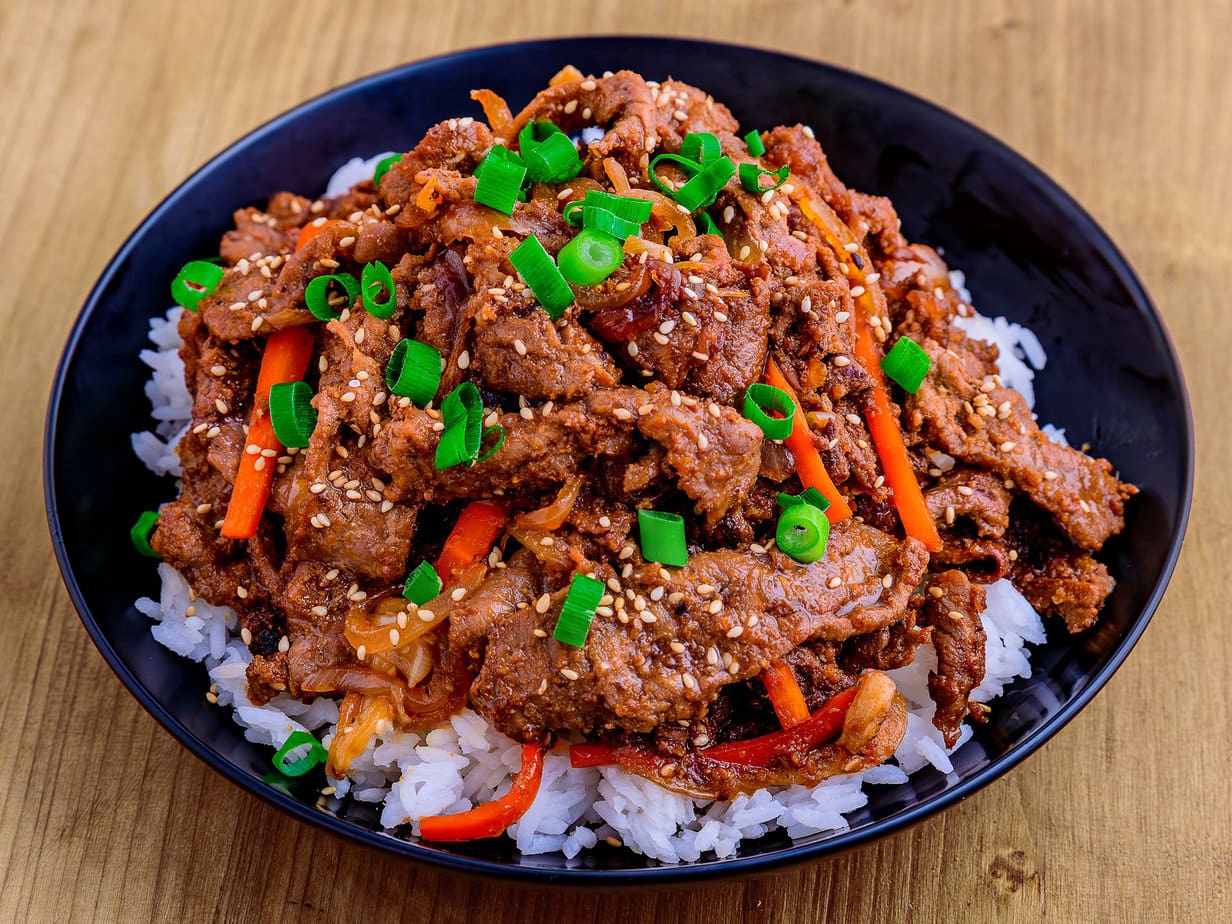
Word spread quickly. By the mid-1990s, the recipe had reached Seoul’s university districts. In Andong, Chicken Alley officially renamed itself “Jjimdak Alley” in the early 2000s.
Its fame skyrocketed after a KBS report in 2001 hailed it as a “revolution in traditional cuisine,” and franchise chains soon blossomed across the peninsula. What was once a market improvisation now regularly ranks just behind bulgogi (and ahead of many other more famous dishes) in tourist surveys of “must-try” foods, proving Andong’s talent for transforming necessity into national identity.
What is Jjimdak?
The Dark Brown Soy Sauce Base
An authentic jjimdak bathes in a sauce as dark as aged soy sauce. Ganjang (Korean soy sauce) is mixed with brown sugar or malt syrup, minced garlic, ginger, and sometimes a splash of rice wine.
Some Andong cooks caramelize a spoonful of sugar (or even add a dash of cola) before adding the chicken, in search of that almost black, lacquered shine. The flavor balances on a wire: sweet, salty, and garlicky – never burning, never greasy.
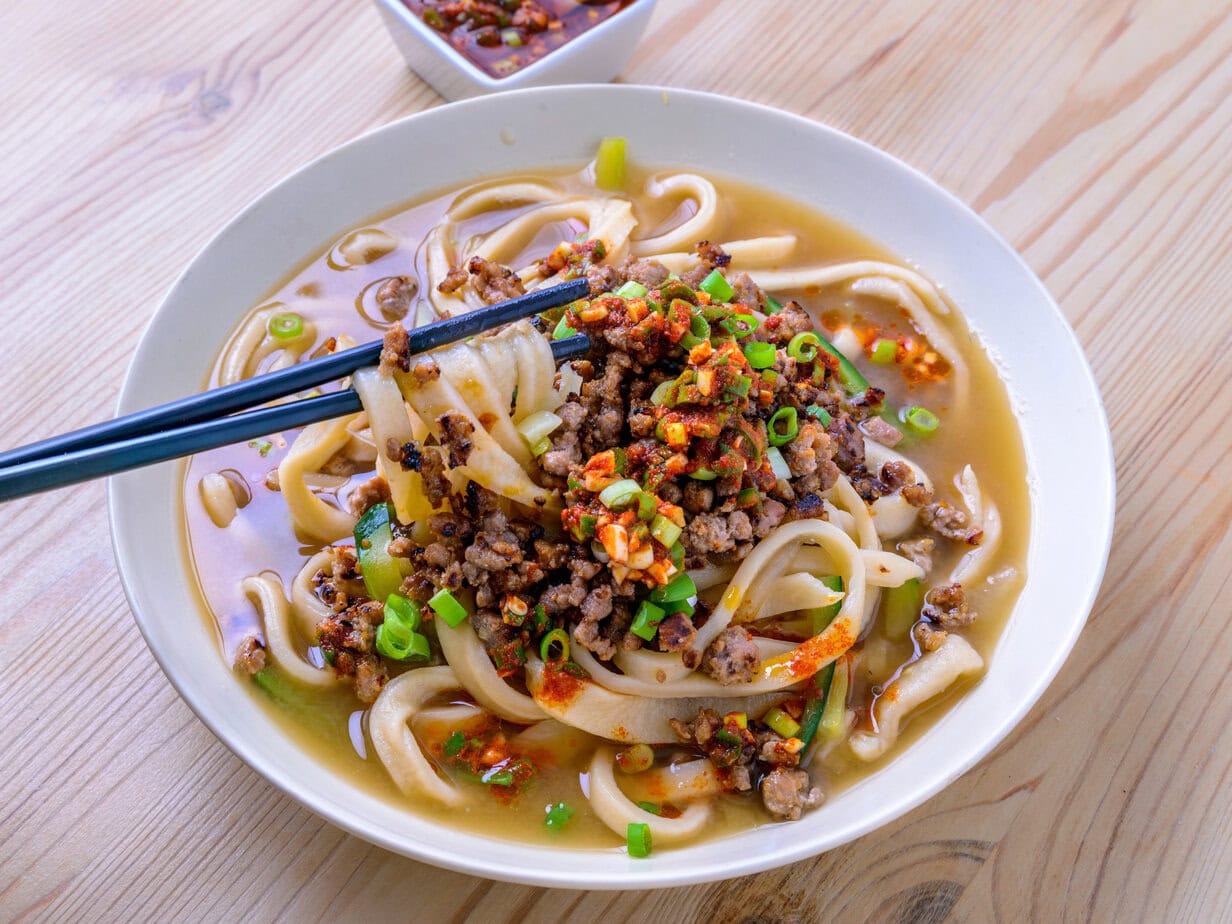
The Power of Whole Chilies
Instead of the scarlet roar of gochujang, jjimdak relies on the discreet authority of whole chilies. A few dried red chilies bring a smoky heat, while slit Cheongyang green peppers infuse the broth with a clean, sharp heat. As the peppers remain whole, the sauce stays brown: each person can avoid them or bite into them as they wish, thus modulating the spiciness without tinting the dish red.
Dangmyeon Noodles: Non-Negotiable
Slipped into the wok during the very last minutes, these sweet potato starch noodles drink up the concentrated sauce until they take on a bark-like hue and an elastic chew. Many Koreans claim that the soul of jjimdak is these noodles, not the chicken; remove them and the Andong “ajummas” will shake their heads.
The supporting roles are equally important: a whole chicken cut up with bones for depth, the quartet of potatoes-carrots-onions-cabbage that adds substance to the dish, and a brief sprinkling of minced chives and toasted sesame that awakens the palate just before serving. Well, here we substitute with chicken thighs, but you get the idea.
The Main Ingredients of Jjimdak
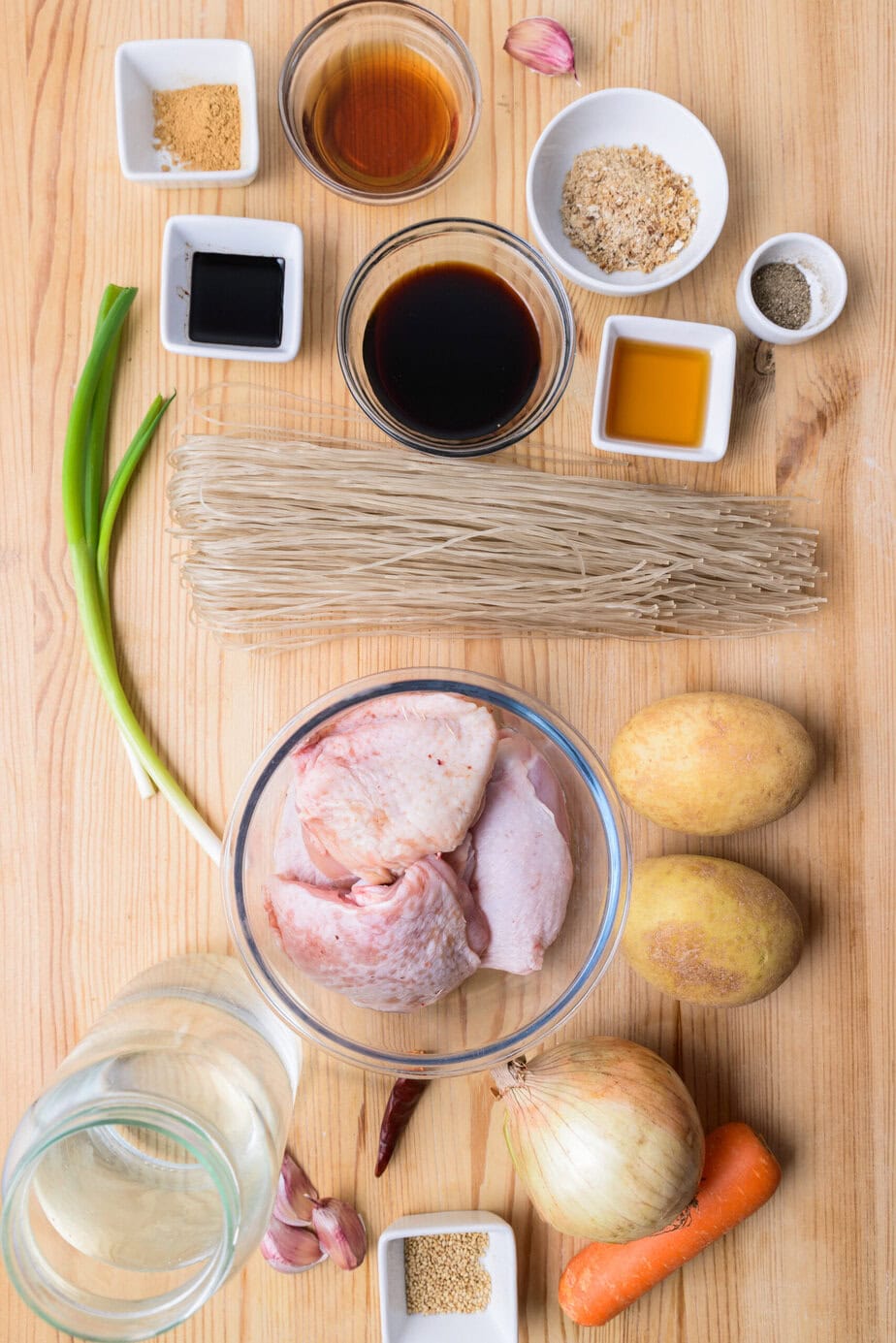
Light soy sauce: Light soy sauce, widely used in Asian cuisine for its salty taste and lightness, serves here as the salty base for the sauce.
Dark soy sauce: Dark soy sauce, thicker and sweeter than light soy sauce, brings color and depth to the sauce.
Shaoxing wine: Chinese rice wine used for its aromatic richness, it flavors the sauce while helping to tenderize the chicken.
Sesame oil: Fragrant oil with a nutty flavor, it adds a final aromatic touch to the sauce.
Sesame seeds: Sprinkled at the end, they add crunch and a nutty note.
Glass noodles: Translucent noodles made from starch (sweet potato, for example), also called glass noodles, they absorb the sauce and add texture to the dish.
Dried red chili: Adds moderate heat and a slightly smoky aroma to the preparation.

Authentic Andong Jjimdak
Equipment
Ingredients
- 1 kg of chicken preferably thighs, with skin
- 700 ml water
- 90 g of glass noodles dry weight
- 1 potato in large cubes of about 1 inch
- 1 onion sliced
- 1 carrot sliced
- 2 green onions In segments
- 1 dried red chili In segments
- 3 cloves garlic sliced
Sauce
- 4.5 tablespoons light soy sauce
- 1 tablespoon dark soy sauce
- 3 tablespoons shaoxing wine
- 3 tablespoons of dark brown sugar
- 1.5 tablespoons garlic chopped
- 1.5 teaspoons sesame oil
- 0.25 teaspoon black pepper
- 2 pinches of ground ginger
Garnish
- green onions thinly sliced
- white sesame seeds
Instructions
- Blanch the chicken for 1 minute to remove some of the fat and impurities1 kg of chicken
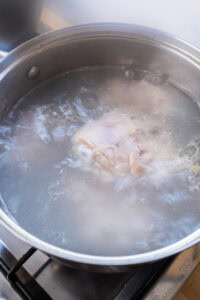
- Drain the water and set the chicken aside700 ml water
- Soak the glass noodles in hot water while preparing the other ingredients90 g of glass noodles

- Mix all sauce ingredients in a bowl4.5 tablespoons light soy sauce, 1 tablespoon dark soy sauce, 3 tablespoons shaoxing wine, 3 tablespoons of dark brown sugar, 1.5 tablespoons garlic, 1.5 teaspoons sesame oil, 0.25 teaspoon black pepper, 2 pinches of ground ginger
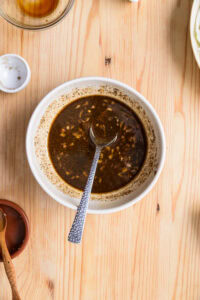
- Place the chicken and garlic in a large pan heated over medium-high heat3 cloves garlic
- Brown the chicken for a few minutes
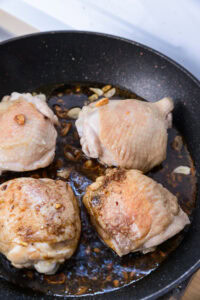
- Pour the sauce and water over the chicken

- Bring to a boil, then reduce to medium heat and let cook for 15 minutes
- Add the potato, onion, carrot, and chili to the pan1 potato, 1 onion, 1 carrot, 1 dried red chili
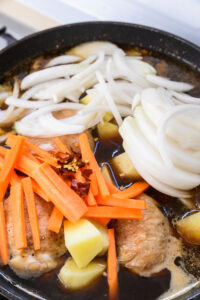
- Cook over medium-high heat for 15 to 25 minutes, until the ingredients are almost cooked
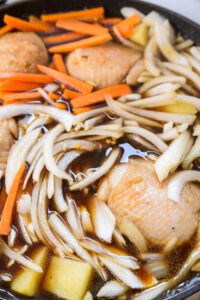
- Add the drained noodles and green onions2 green onions
- Cook for another 10 to 15 minutes over high heat or until the liquid has almost evaporated, then turn off the heat
- Be sure to stir regularly to prevent the bottom from burning
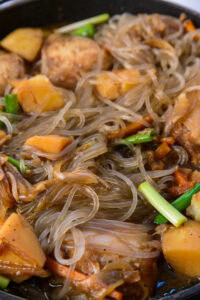
- Garnish with sesame seeds and sliced green onionsgreen onions, white sesame seeds
